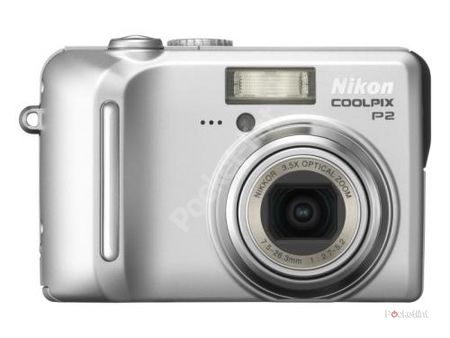As digital compacts go, the P2 (and its 8-megapixel brother, the otherwise identical P1) is a tad underwhelming to look at, with ‘traditional' styling lines making it look a plain Jane when compared to many of the style driven ultra compact models on the market.
Our quick take
Nikon's P2 offers some great shooting features and the convenience of Wi-Fi connectivity but in a rather bland looking package. That said it takes great pictures and is easy to use (bar the Wi-Fi fiddles I had) but at the end of the day that is what counts in my book, which is why I can heartily recommend this camera.

Nikon Coolpix P2 digital camera - 4.0 / 5
| FOR | AGAINST |
|---|---|
|
|
That said, the 5.1-megapixel P2 packs a punch in terms of built-in kit for your cash not found on such svelte snappers, including a neat 36-126mm, F2.7, 3.5x optical zoom Nikkor lens which works a treat, providing punchy and crisp images.
The other feature of note is of course the camera's built-in Wi-Fi capability that (along with the supplied software) enables you to shoot and save directly to a compatible Wi-Fi enabled PC, or stream images directly to a Wi-Fi printer, which can print each image as it's shot.
These features make the camera an ideal party animal, allowing you to shoot while wandering around snapping party goer's indiscretions safe in the knowledge they're being sent to a PC's hard disk or going straight to print. Depending on the location, the range of the camera's Wi-Fi is around 30m.
You get a comprehensive set of automatic shooting or ‘scene' modes, 16 no less! These include the usual gamut of settings for landscape and portrait but you also get 11 advanced scene modes that provide tweakability. Each ‘advanced' mode provides three settings: Normal, Effect 1 and Effect 2. Each offers a range of adjustments to saturation, colour values of specific hues such as blues and greens all depending on the mode and scene you've chosen.
Scene modes get ample support from the Aperture Priority mode that gives 10-step aperture control. You also have Nikon's innovative D-Lighting system built in where you can adjust images in camera. D-Lighting adjusts for excessive back lighting or low powered flash exposures bringing out mode detail and saving a new copy of the enhanced image.
Another neat feature is the Face AF set up, where in the Portrait mode, a face icon appears on the camera's impressive 2.5-inch colour screen. Once the camera locks onto your subject's face, the AF system tracks the movement of the face within the frame, ensuring it is always focused. The face icon moves around on screen so you always know where it's ‘looking'.
Storage is either a paltry 16MB of built-in memory or you can employ the services of SD or MMC cards, which slot in next to the small EN-EL8 Lithium-ion battery pack under a flap on the base of the camera.
As for actually using the camera, it is straight-forward in terms of handling using a simple layout of a small mode dial on the top plate adjacent to the shutter release. The mode provides fast access into the comer's scene modes and manual settings along with other main function including the Wi-Fi connectivity. ISO sensitivity provides a modest range of settings and runs from 64 to 400 ISO.
The back plate reveals the large screen and the obvious omission, there's no optical viewfinder, the compromise with having a larger screen. Other controls include the zoom button, menu and playback buttons and a direct delete button. There's a large four-way jog button providing access to exposure compensation (and aperture adjustment in Aperture Priority mode), self timer and macro settings.
You use the central ‘OK' button to select settings from menus scrolled through using the jog buttons. Significantly, those same menus are dominated by easy to use, icon driven screens that you can switch to text menus if you'd prefer. The menus incorporate the superb Nikon ‘Help' system, where each function or setting has a help screen describing what that setting is and how it can be used.
Once the software is installed, the P2's Wi-Fi system was a bit of a fiddle to get working properly. Much tinkering with network settings was required on my Wi-Fi enabled iBook laptop but once set up transmission is surprisingly fast.
In terms of image quality, the one image quality downside is some intrusive noise in shadows, even at ISO 100 and with the noise reduction mode activated. Otherwise, the P2 provides a comprehensive package of metering (spot, centre-weighted and matrix) AF modes, burst shooting (up to 30fps) and an interval shooting mode. Slight underexposure seemed the norm but otherwise the image quality is exemplary, crisp, and colourful and with exposure compensation and D-Lighting as back-up, the images were superb.
To recap
The Nikon Coolpix P2 is a plain Jane in terms of its looks but it packs a real punch in terms of image quality and ease of use. Stunning images from accomplished compact with the convenience if Wi-Fi technology built in

